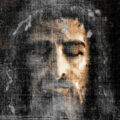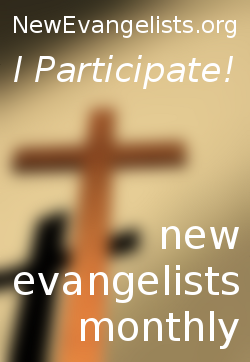
Prior to the changes implemented in response to Vatican II, the presider at Mass as well as the congregation faced east together, toward the Lord. This is known as “ad orientem,” Latin for “to the east.”
Many may be surprised to learn that nowhere in the Council documents was it even suggested that the priest should be turned away from God and toward the people. To my mind, this changes (at least to some degree) the focus from Him to us. It is some of the over-reaching, not of Vatican II itself (of course!), but of its implementation. I would definitely put this on the list of things to be considered for the “reform of the reform.”
Recently, Father Richard Simon celebrated Mass in the Ordinary Form (a/k/a “Novus Ordo”), but with a change – he did so partly ad orientem. This surprised the by-the-book part of me. I realize that EF (Extraordinary Form – a/k/a the Tridentine Mass, TLM, or the Latin Mass) is properly celebrated this way but I suspected it might be a liturgical abuse to do so with the OF. Not so! Father Simon explains:
I did it as an experiment. I suspect that the Council Fathers of Vatican II never envisioned Mass facing the people. I wanted to know what the Mass of Vatican II would really be like, some English, some Latin, Gregorian chant, unaccompanied singing and a balance of facing toward people when addressing them and facing the altar with them when addressing the Father. I think this is what is called in the rubrics of the Missal when it indicates that the priest should face the people six times during the Mass:
- When giving the opening greeting (GIRM 124).
- When giving the invitation to pray at the end of the offertory, “Pray brethren” (GIRM 146).
- When giving the greeting of peace (GIRM 154).
- When displaying the Host and Chalice before Communion and saying: “Behold the Lamb of God” (GIRM 157).
- When inviting the people to pray before the post communion prayer (GIRM 165).
- When giving the final blessing (Ordo Missae 141).
The fact that these rubrics exist, seems to assume that the priest is facing away from the people at some time during the liturgy.
Very interesting. Father goes on to describe his impressions:
I, however, wish I had not said Mass facing away from the congregation, and not because of the anger directed at me. I am a Catholic priest. I am used to people being angry with me. I wish I had not said Mass in what I believe to be the posture assumed by the Fathers of the Second Vatican Council, because it was one of the most beautiful experiences of my priestly life. You cannot imagine what it was like to say words like “we” and “our Father” and “us” while standing at the head of a congregation that was turned together in a physical expression of unity. No matter how one might argue to the contrary, it is impossible to say “we” while looking at 500 people and not be speaking to them.
The Mass is a prayer addressed to the Father, and despite our best intentions, we clergy address it to the congregation at whom we are looking. You cannot help it. The human face is a powerful thing. Last Saturday night I realized for the first time that I was part of a family of faith directed toward the same heavenly Father. I felt as if I was part of a church at prayer. It was not my job. It was my church. I never realized how very lonely it is to say Mass facing the people. I am up there looking at you. I am not part of you. For 13 or 14 minutes. You weren’t looking at me. We were looking at God.
I love the Tridentine Mass, or as we are supposed to be calling it now, the “extraordinary form.” I think that the Holy Father has been very wise in allowing its revival for those to whom it is meaningful. Its sense of solemnity is very beautiful and enshrines an essential dimension of the mystery of worship. I taught Latin for about 25 years, I understand the complex rituals of the old Mass. They mean a lot to me. Still, I don’t think that we should return to the exclusive use of Latin. I think the Council Fathers were right to simplify the mass.
The Holy Spirit anticipated the difficulties of our times. The simplification of the complex and beautiful gestures of the Tridentine Mass are entirely appropriate for the times we live in. In the same sense, there should be a pastoral balance between the common language and a “sacred language.” People pray best in their own first language. Remember that Latin was the vernacular when the Mass was in Greek. Latin itself was a concession to the popular mind. This being said, we the clergy should admit that we enshrined the liturgical abuses that were at the heart of the rebellion against tradition. We have become stuck in the 1960’s and are unable to look without prejudice at the hemorrhaging of our congregations. We have failed to inspire them with a sense of the sacred and sublime and generations have been lost to the Lord and the Gospel.
Read the whole article at Reverend Know-It-All.
I discovered this through Father Z’s coverage. Margaret Cabaniss over at Crisis Magazine also has some good thoughts on this.
Finally, Father Fabian Duggan wrote a brief, but very good, overview of the symbolism of facing east.



























I find this whole thing a mildly amusing. I grew up before Vatican Council II, so I experienced the Tridentine Mass every Sunday as well as daily during my Catholic elementary school years. No one ever said, we were facing East. In fact, our church building was oriented North-South, so our priests faced North, not East. I feel sure many other city churches, built on small plots of land were built in a variety of orientations.
I believe this knowledge about "ad orientem" was resurrected as a result of the historical studies about liturgy shortly preceding, during, and since Vatican Council II. I just took a look at the old catechism that was used during my school years. The section about Mass says nothing about ad orientem.
If some priests like to say parts of the Mass with their backs to those assembled, like Fr. Simon, and it is licit, then I see no problem for them doing so whenever they like. On the other hand, for those who don't like it, why not offer options? Then people could pick their preference.
Hi Ruth Ann!
I don't think the issue is really about "facing east" per se. That is more historical given churches have not been built that way for a while. The issue is about everyone, priest included, celebrating Mass together vs. toward each other.
Personally, I have never been to Mass ad orientem (having been Catholic now for all of 9 months). I would like to experience it however. There is 1 Latin Mass parish about an hour from me that I hope to visit.
When you go to the Latin Mass parish it would be interesting to read your reaction. Maybe you could blog about it. Is the Latin Mass a Tridentine or a Novus Ordo?
I'm guessing that ever so slowly more options will become available that will be at more convenient locations for those who are interested.
I too remember the Tridentine Rite, so when our parish went "back" to ad orientem it was a non-issue.
I do prefer it to the priest facing the congregation.